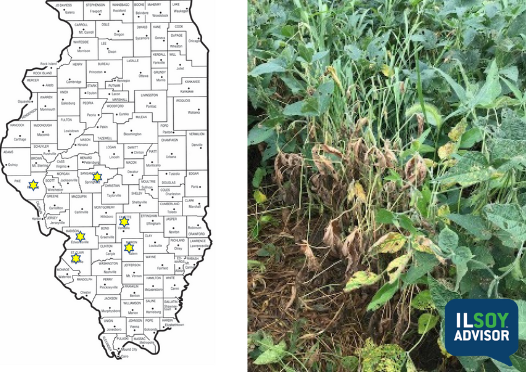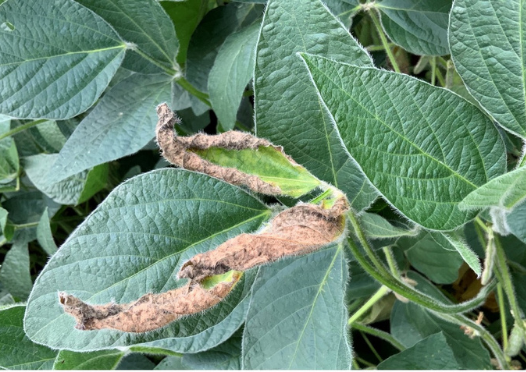ILSOYADVISOR POST
Agronomy: Combating Green Stem Syndrome
A common frustration growers have with soybeans is the tendency for the grain to get excessively dry (under 10%) on a plant whose stems remain green and tough. When the grain is below 13% moisture we lose yield due to decreased seed weight (water loss) and increased shatter losses. To make matters worse, tough-cutting plants slow harvest and increase fuel consumption. Growers often wonder why the grain and the plant can’t be ready to harvest at the same time.
Breeding soybeans for improved disease resistance and employing high yield management practices tend to make plants live longer. Some yield contest winning producers actually have to desiccate or defoliate soybeans to be able to harvest them in a timely manner. When the plant is healthy the pods and seeds can dry much faster than the rest of the plant—especially during prolonged warm and dry periods after maturity. Often times a rainy period during this time will keep some moisture in the grain and allow the plant more time to senesce naturally.
This issue has become known as “Green Stem Syndrome.” All the reasons for it are not completely understood, but some known causes are:
- Pod abortion due to mid season stress followed by good late-season growing conditions—plants produce excess sugars unable to be utilized during grain fill that keep plants alive longer.
- Insect feeding and the presence of viruses (pod mottle, soybean mosaic and tobacco ringspot viruses) will increase the incidence and severity of green stem.
- Environmental conditions—most noticeable with warm and dry conditions prior to harvest.
- Genetics—varietal and maturity differences can impact the severity of Green Stem. Soybean breeders try to walk plots prior to harvest to weed out lines with severely green stems.
It is possible to have soybeans with green stems and disappointing yields—generally the case if the condition is brought on by pod abortion or the presence of viruses. However, in 2015 we had many reports of green stem soybeans with tremendously high yields. In these cases the condition was most likely brought on by low disease pressure, healthy plants and high-yield management practices.
If you are faced with harvesting green stem soybeans there are a limited number of management options:
- Slow down and slug your way through them if possible. This takes extra time, fuel and can lead to more wear and tear on harvesting equipment.
- Delay harvest until plants have dried more. This is a common strategy and might be the best approach if you can catch a rain that keeps grain moisture closer to 13% while allowing plants to dry down more.
- There are herbicide and sodium chlorate products labeled for use as a harvest aid to desiccate plant material prior to harvest. This is a common practice in other crops, like cotton, and some yield contest soybean fields, but an additional expense most soybean growers are not accustomed to.
Lance Tarochione is a technical agronomist with Asgrow/DEKALB in west central Illinois. His work has focused on crop production, research and product development, and through his role at Monsanto® he currently supports the Asgrow® and DEKALB® brands in seven counties in western Illinois.




Comments
Add new comment